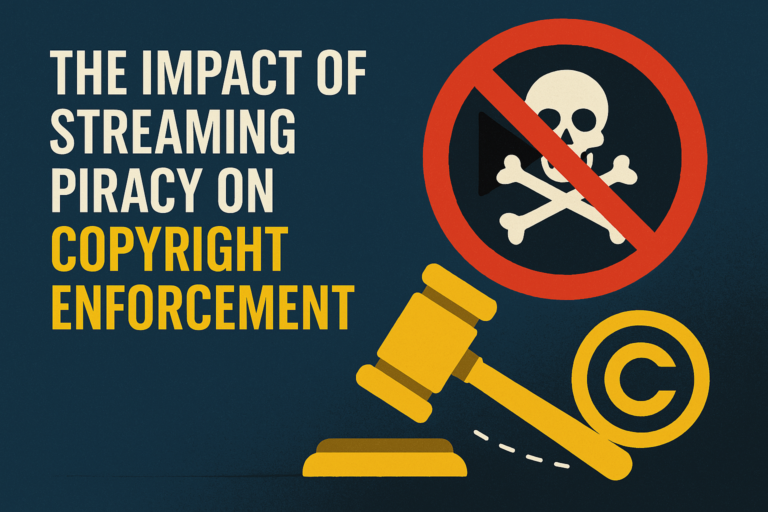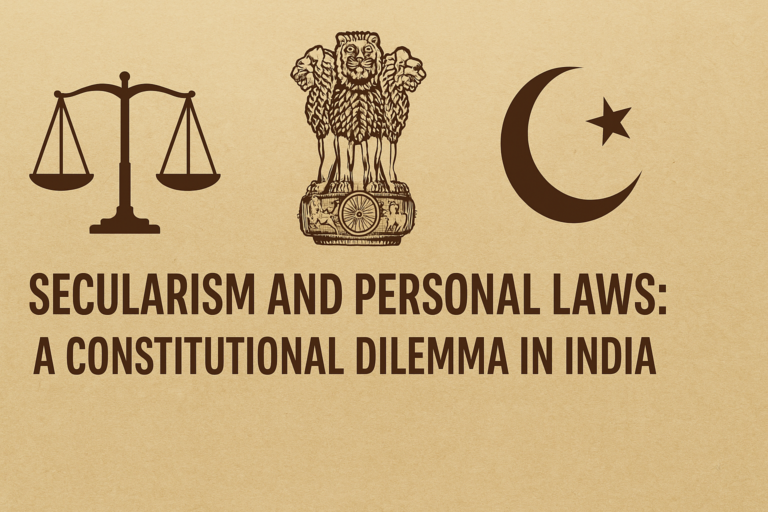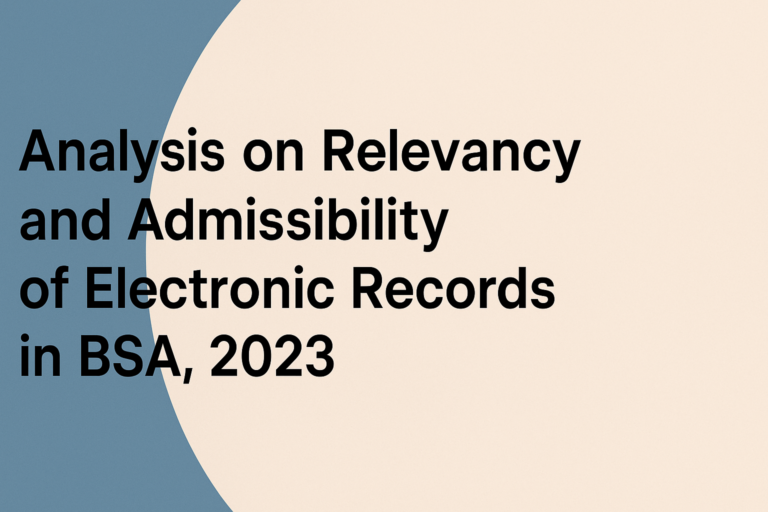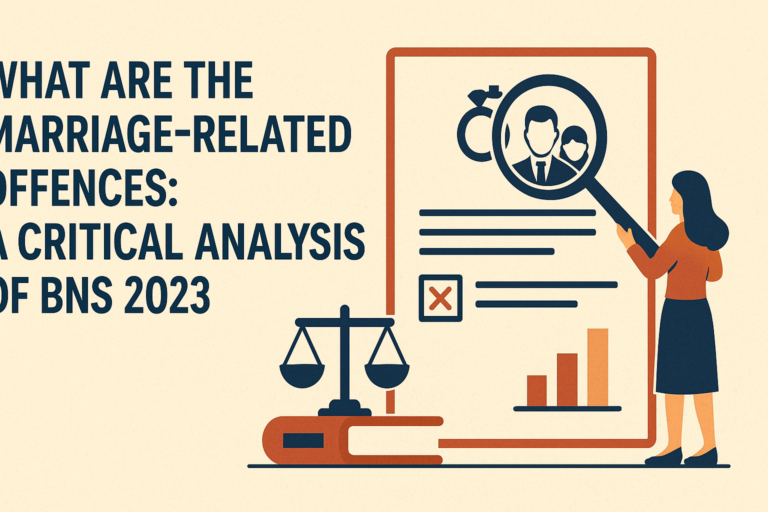
Introduction
Intellectual property is the result of human creativity. It is immaterial and gets its ideals from sources other than the creator’s notions and ideas. This article will examine the fundamentals of the law of space and how IPR offers suitable defense in space and other distant regions. IPR shall be granted by space law; they will not be utilized as a means of obtaining an unjust deal. Space law is regarded as a crucial component of the global legal system that regulates activity in the region above Earth’s atmosphere. This Article also addresses several other issues, including safeguarding and upholding the space ecosystem, resolving conflicts amongst worldwide space study organizations, holding accountable organizations that harm space debris, and disseminating knowledge concerning possible risks and dangers in space. In situations like this, intellectual property rights regulations come to the assistance of safeguarding such works, and innovations, and as technology continues to progress, humanity’s search for more progress has now reached outer space. Numerous global companies are making investments in and creating cutting-edge technology. Protecting the cutting-edge technology that several worldwide groups are funding to build for space exploration is important. The interaction between the growing IPR requirements in space law is somewhat shown in this article. Considering the current rate of space inventiveness, entrepreneurial involvement may eventually overtake public space activities. Remotely sensed direct transmission, vehicles for space exploration, and communication via space are examples of conceivable capabilities. The space and various jurisdictions will need to pass laws to implement these advancements. For some months now, there has been a quest for business ventures, particularly among private enterprises. The creation of new technologies whether on our planet or in space requires a willingness to be innovative and to generate original works that result in concepts or tangible representations of concepts, which is precisely what the laws governing intellectual property are meant to protect. Secretive information, inventions, and copyrights may exist. A significant percentage of global space agreements between various countries deal with legislation and protections about IP in space. It is important to remember that space is still a place that is being explored when performing duties in space or on aerospace-related tasks. Since the concept in space is unidentified it might be challenging to determine how to safeguard IPR there. The UN space accords are mostly implemented through worldwide laws about space. The issue of proprietary rights in space is not well-explained by these international agreements. Still, studies are being done on the laws and rights of space-related matters.
Howdy, you all! Welcome to your page of knowledge. You will find different legal blogs, the latest news, current affairs, and many more on this channel. This is the initiative to develop the knowledge of the law in the world, especially for you.
Role of Intellectual Property in Outer Space
It requires a lot of effort, time, and resources in research and development (also known as “R&D”) to come up with the newest techniques for studying and exploring space. This field is full of many intellectual accomplishments that will pay off for all of mankind. To expedite developments, several private non-profit organizations are actively pursuing this topic, which contrasts with government-owned corporations. These businesses engage in a variety of operations, such as direct broadcasting, space-based surveillance, and production as well as investigation in microgravity conditions settings. Due to the financial outlay necessary to carry out these operations and the significant monetization of these ventures, the corporations constantly wrestle with protecting their creative ideas and tangible assets. Due to the high cost of developing these innovations, cooperation involving government-owned and privately-held enterprises is having difficulty. The innovation that they were granted would be retrieved with no duplicate as well as manipulation in the years to come, as stated explicitly in their agreement. Companies are encouraged to spend more on space technological progress by such precautions. Internationalization of space operations is an ongoing trend that is contributing to the demand for IPR in space.[i] Several amount of satellites initiates are now being conducted through multilateral collaboration programs including a range of parties with the assistance of the space station called the International Space Station. Consequently, an unambiguous, consistent, and trustworthy worldwide judicial system is needed. Even Nevertheless, various national laws employ distinct conceptions, and native intellectual property (IP) regulations are not adequately coordinated.
Enforcement of Intellectual Property Rights in Outer Space
Despite the lack of an explicit definition in the copyright legislation, “originality” is nonetheless considered a crucial criterion for establishing an idea’s eligibility for protection under copyright. The unprocessed data that these spacecraft gather has little copyright importance when it originates from outer space operations. All modified or additional details information developed following the basic spatial information originally provided is protected by copyrights. Who is the originator of such art is an additional issue that comes up. The person who created or author of the piece of content is generally recognized as the initial copyright holder, but since these creations are collected by computers in space lacking the involvement of humans, it is hard to determine who holds ownership of the intellectual property rights. Protecting the firm’s reputation for its commodities and amenities is the main goal of a registered trademark. For trademarks to serve as sources on the auction site, they need to be unique and distinctive. In addition, phrases, pictures, color schemes, and other signs can be trademarks. Trademarks and space travel don’t cause too many problems. Conversely, the trademark’s ability to stop violations in space would eventually run out. A patent is granted to an Innovation if it is new and original. Generally, a patent gives the owner of the creation the only right to employ, grow, and market the innovation for a set amount of time. A trademark has been filed for the entire scientific process of employing a remote-sensing satellite to gather unprocessed data from space. Using a unique, exclusive methodology and technology, each monitoring satellite is copyrighted. The exploitation or infringement of a breakthrough gives rise to problems for space patent laws.
Law Governing Intellectual Property Rights in Outer Space
Since we look attentively at the issue, we can see that since space activities are always changing, then it is practically necessary to create IP restrictions. As technology advances and novel tools for space operations are developed, it becomes harder to determine if some aspects of intellectual property (IP), such as the production process, inventions, and software licensing, are covered by IP. It is crucial to comprehend the meaning of the term “Outer Space” before attempting to comprehend space law. Outer space is defined as the area 100 kilometers above Earth. The boundaries between air space and space have not yet been established by an international agreement, but it has been established by norms and opinions that a spacecraft does not travel beyond or below 100 kilometers.[ii]
Major International treaties governing Intellectual Property Rights in Outer space.
- Paris Convention For The Protection Of Industrial Property
- WIPO Copyright Treaty
- Berne Convention For The Protection Of Literary And Artistic Works.
- Trade Related Aspects Of Intellectual Property Rights Agreement.
- Outer Space Treaty 1967
The Protection of Intellectual Property Rights in Outer Space
Under the direction of the Dept. of Science, ISRO is the primary organization in India devoted to space advancement. Investment in IP conventions becomes increasingly important as India advances its space-related programs, allowing the international arena to take this factor into account at the same time. A solid motive for conducting research and expanding invention is provided to commercial space organizations, therefore granting them certain patents and other IP will ensure that space-related endeavors advance quickly. Enhancing space exploration efforts requires the development and implementation of an overall structure. Although the effects of enacting the same rules have shown it to be a pointless undertaking, the current intellectual property policy worldwide doesn’t vary much. A defective mechanism might have harsher effects in space, typically leading to pecuniary damages. It is necessary to establish a distinct mechanism for the implementation of IP rights. IPR is very territorial, thus it might be challenging to write laws that are clear and comprehensive enough to address every aspect of space-related IPR. All legal disputes are known to be contingent on how frequently comparable problems occur, particularly if the concept of separate organizations with disparate legal systems is involved. Therefore, it is necessary for the responsibility of space intellectual property rights to be distinguished from domestic intellectual property rights. There is no fundamental worth to the unprocessed information that satellites carry. Following knowledge compilation to create useful knowledge, the copyrights will be preserved in the analyzed final additional value data. To identify water levels in the ground, map the landscape, anticipate the weather, and monitor the surroundings, remote sensing satellites send out photos. It will be challenging to identify the true creator of unprocessed information gathered by a satellite in the Indian context,[iii] even concerning the copyright law from 1957. India’s legislation regarding IP in space is still in its early stages, notwithstanding its latest forays into the field.[iv] On the other hand, it has actively participated in the negotiation and drafting of several international agreements, including The Moon Treaty of 1979, The Liability Convention of 1972, The Outer Space Treaty of 1967, and The Registration Convention of 1975 all of which were produced by the UNCOPUOS, the Committee on the Peaceful Uses of Outer Space. A clause about the illegality of infringement of IPR is found in the Paris Convention, and it may apply to IPR about space. Still, as of right now, no space-related laws have been passed. The government is preparing to introduce the Space Activities Bill, 2017, which aims to reduce government dominance and enhance privately owned investments with government bodies’ authorization. This is because there is an urgent need for a regulatory structure of national space statutes to support the development of space activities. This recommended bill’s provision 25 contains information about IP rules that are pertinent to space-related activities. In addition to this, there is uncertainty about who owns the IP that is generated; for example, if SpaceX launched a satellite from India and gathers fresh data supporting a certain hypothesis, does that data belong to SpaceX or India? The law lacks clarity at times and ignores crucial issues like orbiting copyrights and signals of expediency. There are times when the law is unclear and leaves out significant issues like orbital patents and flags of convenience. But all things considered, the law is a strong start toward elevating India to the vanguard of the exploration of space and associated missions. It illustrates how the Indian government supports the preservation of IP in space.
Conclusion
Activities in space have long been associated with sophisticated studies as well as high-tech breakthroughs, but intellectual property rights acknowledgment for such endeavors is relatively recent. India, like numerous other countries, has not yet enacted space laws or included space-related components in its domestic intellectual property rights regime. Space law is consistent and universal across all nations as it is an aspect of international law, yet each nation has its intellectual property framework, which presents the largest obstacle to their reconciliation. The space intellectual property rights domain lacks uniformity in regulation and legal clarity. Space intellectual property rights concerns now lack the tools for compliance found in law. The optimal utilization of public and commercial assets in the field of space technology would be facilitated by dependable, succinct, and unambiguous worldwide rules and regulations, which would also promote national growth.
This article has been written by the following authors
- AUTHOR– Avantika Srivastava (B.A.LL.B, 4th year / 8th Semester, from Integral University)

- CO- AUTHOR– Satya Vrat Pandey (B.A.LL.B, 4th year / 8th Semester, from Integral University)

[i] WORLD INTELLECTUAL PROPERTY ORGANIZATION, https://www.wipo.int/patent-law/en/developments/pdf/ip_space.pdf (last visited Jan 22, 2024)
[ii] Harsha Rohatgi, India: Patents In The Field Of Outer Space, MONDAQ ( Jan 22 2024, 9:12 PM), https://www.mondaq.com/india/international-law/361228/patents-in-the-field-of-outer-space
[iii] KD Raju, Issues in the protection of Intellectual property created in Outer Space, COMMONLII ( Jan 23, 2024, 11:15 AM), https://www.commonlii.org/in/journals/NLUDLRS/2012/37.pdf
[iv] Nishu Kumar, India: IP Laws In Outer Space, MONDAQ ( Jan 25, 2024, 6:08 PM),https://www.mondaq.com/india/patent/1038616/ip-laws-in-outer-space









